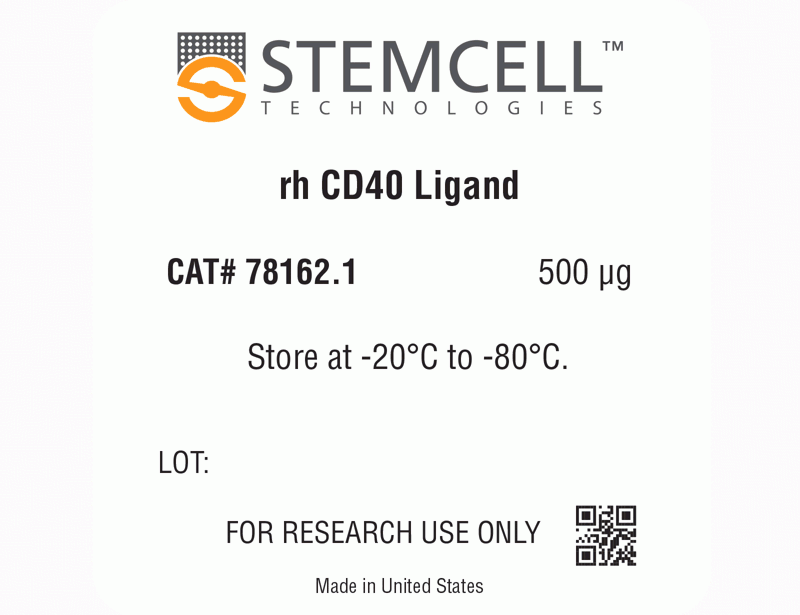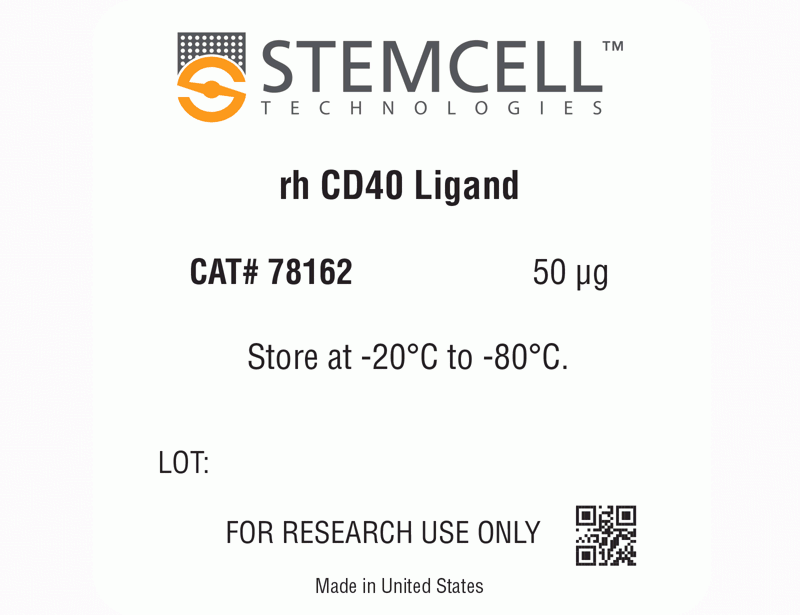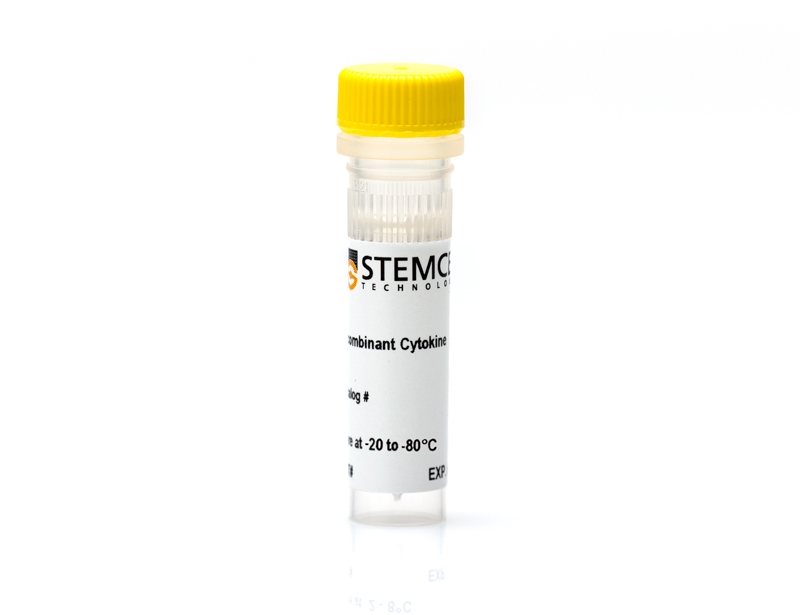概要
技术资料
| Document Type | 产品名称 | Catalog # | Lot # | 语言 |
|---|---|---|---|---|
| Product Information Sheet | Human Recombinant CD40 Ligand | 78162, 78162.1 | All | English |
| Safety Data Sheet | Human Recombinant CD40 Ligand | 78162, 78162.1 | All | English |
数据及文献
Data

(A) The biological activity of Human Recombinant CD40 Ligand was tested by its ability to induce alkaline phosphatase activity in HEKBlue ™ CD40L responsive indicator cells. Alkaline phosphatase activity was measured using a fluorometric assay method. The EC50 is defined as the effective concentration of the ligand at which alkaline phosphatase activity is at 50% of maximum. The EC50 in the example above is 16.7 ng/mL. (B) 1 μg of Human Recombinant CD40 Ligand was resolved with SDS-PAGE under reducing (+) and non-reducing (-) conditions and visualized by Coomassie Blue staining. Human Recombinant CD40 Ligand has a predicted molecular mass of 16.3 kDa.

 网站首页
网站首页




